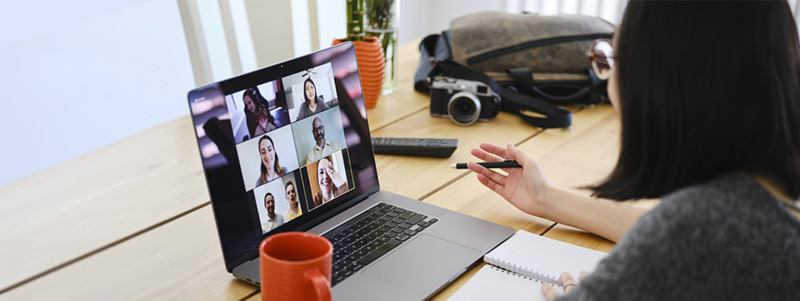Work meetings etiquette in 2021
20 January 2021
4
min read
COVID-19 has resulted in many changes to our lives including how we work. These days it is not uncommon for many work meetings to be conducted as video calls with our living rooms, bedrooms and home offices becoming our conference rooms.

We’ve realised the productivity, health and lifestyle benefits of working remotely. But we’ve also recognised the importance of face-to-face connections.¹
To effectively plan for the future, businesses will need to continue to take both preferences into account. Employees will likely want to work from home more frequently, however, physical meetings will continue to be an important part of the workday.
A significant feature of the 2021 work environment will be that almost every physical meeting will include participants joining remotely.
Here are some tips to reduce distractions, boost professionalism and make your virtual and hybrid meetings more productive.
Virtual meetings
Ensure you log in early, test your connections and make sure everything is working correctly before the call starts.
Removing distractions like notification pings, pop-ups or a ringing phone will make you look significantly more professional.
Microphones can pick up all sorts of sounds like typing, coffee sips and lawnmowers, so put yourself on mute except when you’re speaking. If you are the host, it’s a good idea to ask everyone to go on mute at the beginning of the call.
Use the video option as it lets people see visual cues and look at the camera when talking. It’s a bit awkward at first, but your meeting attendees will appreciate the eye contact.
It’s tempting to return emails or send texts while on a video call, but multitasking prevents you from fully engaging and participating in the meeting.
You must ask everyone on the video call before taking a screenshot, and you also need to ask permission to send or post them.²
Before you host a meeting, check out the platform’s features. Options like screen sharing, waiting rooms, placing participants on hold, virtual whiteboards and chat options can make your meeting more dynamic and engaging.
Hybrid meetings
A hybrid meeting combines face-to-face participants with others who link in remotely. Planning and discipline is needed to manage the energy and attention of participants in both environments simultaneously. Some hybrid best practices include:
Invite virtual participants 10 minutes earlier than the in-person attendees to smooth out tech issues and eliminate distractions before the meeting begins.
It’s easy for them to feel as if those physically in the room have forgot them.
In-person participants should avoid side conversations.
Have a back-up plan, such as an alternate platform or dial-in number, for situations when the virtual meeting platform fails.
As the world continues to adapt and change, new ways to communicate and collaborate effectively in the workplace will emerge.
Taking them seriously and thoughtfully can be an excellent way to shine and be known as digitally savvy, adaptable and professional.
1. Ikin, H. Australian Psychological Society, In Psych June/July 2020, Perks and pitfalls of working from home: Will COVID-19 change the future of work? www.psychology.org.au/for-members/publications/inpsych/2020/June-July-Issue-3/Perks-and-pitfalls-of-working-from-home-(1), accessed 31 December 2020.
2. Legal Aid Queensland, www.legalaid.qld.gov.au/Find-legal-information/Personal-rights-and-safety/Privacy-and-identity/Privacy#toc-sharing-photos-or-videos-on-the-internet-2, accessed 30 December 2020.
The opinions expressed and those providing comments are theirs alone, and do not necessarily reflect the opinions of the QSuper Board. No responsibility is taken for the accuracy of any of the information supplied and you should seek advice for your circumstances.